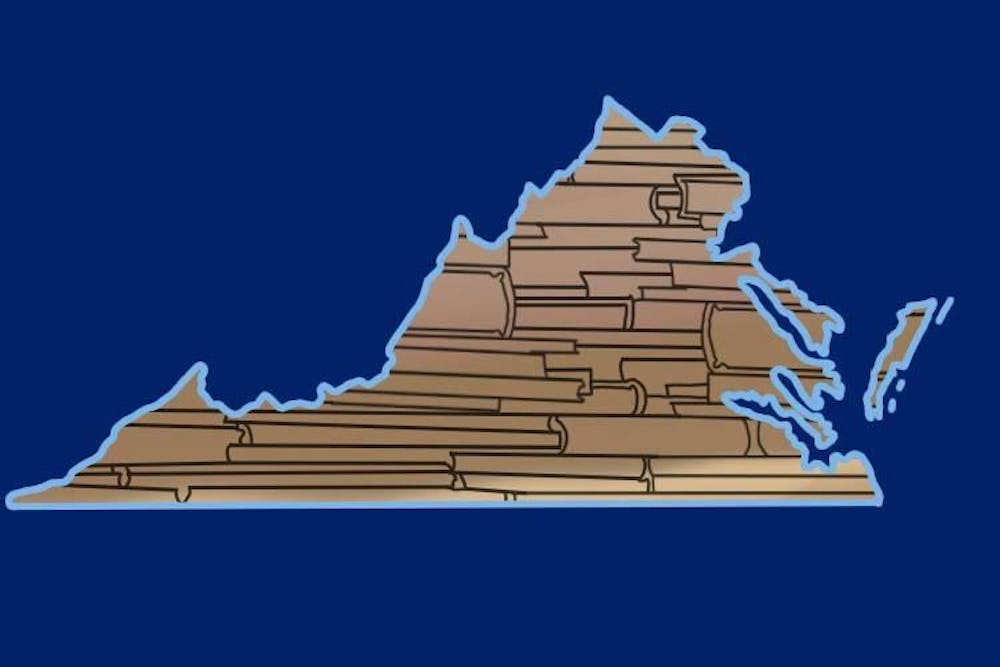The University is home to a myriad of creative writing and arts Contracted Independent Organizations that provide communities of inspiration, feedback and learning. But where do students go to present their works to larger audiences? One of the most prominent options is the Virginia Literary Review.
Founded in 1979, VLR publishes a variety of poetry, prose and visual art in both a print and online issue each semester. The organization itself is run by University undergraduate students — but submissions are open to any Virginia college students, making it an ideal way for young Commonwealth creatives to gain experience and exposure.
Thinking outside the box is strongly encouraged in the Virginia Literary Review. When considering submitted pieces, VLR uses an entirely anonymous grading system. Works are assigned for evaluation to the Review’s various editors on a spreadsheet — without name or year — meaning that background or connections will not impact the likelihood of getting published. According to Aoife Arras, editor-in-chief of VLR and fourth-year College student, creativity and quality take center stage.
“One of the questions that I ask [editors] when they’re looking at a piece of art is — ‘what about this piece of art makes the artist’s perspective unique?’” She said, “It’s less about a specific ‘thing’ that we’re looking for, more just like creative ways to show a certain perspective.”
Once selected for submission, the artists will work with VLR editors to further refine their pieces before publication, rarely changing anything other than grammatical or formatting related, according to Arras. Third-year College student Will Hancock — who was published in VLR last fall — felt as though his artistic vision was always supported throughout the editing process.
“Sometimes editing can be a little bit of an abrasive experience,” he said. “I didn’t feel that at all. I never felt uncomfortable or threatened to alter any of the artistic integrity behind my poem.”
The commitment to artistic creativity and integrity manifests itself in the magazine’s diverse array of pieces— even within the main creative categories of poetry, prose and visual art. The visual art selections can range from paintings to photographed embroidery projects, and poems range from several page-long stanzas to intricately spaced out lines that fill only half a page.
Additionally, diversity in background and experience is present within the magazine, supported by the Review’s anonymous grading system. Editors themselves are able to submit to VLR for consideration, so there is no drawback to applying. One of Arras’s poems was selected for publication in last semester’s issue, and she discussed how her creative use of form encapsulated the poem’s message about what it means to be the child of an immigrant.
“All of the words are extremely separated on the page,” Arras said. “I wanted to convey that it’s a really scattering experience to be the child of an immigrant. There are all these different ideas that are pushed on you and things that are expected of you and fragments of who you are.”
Another benefit of submitting to VLR is how it challenges writers and artists to push themselves. According to Arras, the magazine received about 150 submissions last semester and accepted 15. Third-year College student Vaidehi Bhardwaj — who published a piece of free-form prose in last fall’s issue — said how the competitiveness of the magazine pushed her to present the best piece of prose she could.
“It was just a great feeling to be published in VLR because it’s a pretty competitive journal with submissions from all across Virginia,” she said. “It kind of felt like the culmination of about a year of work that I’ve been putting into this piece. This was my second time submitting to VLR … Just because of the dint of its competitiveness, it does encourage you to be at the top of your game.”
Besides just personal growth, the magazine also presents gateways into collaboration and community with other creative minds. Being published alongside writers and artists from various universities can open doors for students to communicate and collaborate. Bhardwaj talked about the community she found after being published last semester.
“I got to meet some of the other authors that have been published,” she said. “It was definitely great to form that kind of community. I think it's a community that persisted, even after the compilation and the actual publication of the issue was complete last semester.”
Throughout her time with VLR, Arras treasures the community she found in the shared passion for writing and art the most.
“Everyone is really nice and super creative on the VLR and I enjoy working with all of them,” Arras said. “Being surrounded by people who are interested in the same thing as you is a really great thing.”
First-year College student Jasmin Dockery — who had a photographed work of embroidery featured in the Fall 2024 issue — also noted the community of support she has felt during her experience with VLR.
“Everyone has been so happy for me since they watched the [embroidery] project from start to finish,” she said. Dockery then went on to give a piece of advice for those interested in submitting to the VLR, emphasizing the importance of simply putting yourself — and your art — out there.
“My advice to anyone who would want to submit their art would be to just share it,” she said. “You never know who you may inspire or move with your piece ... Art is always worth sharing.”
The Fall 2024 issue of the Virginia Literary Review is available to view on their website, where submission applications for the Spring 2025 issue are also open until March 17.







